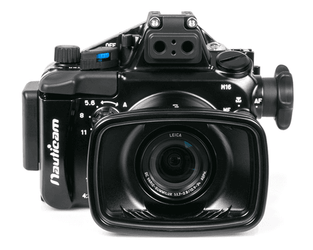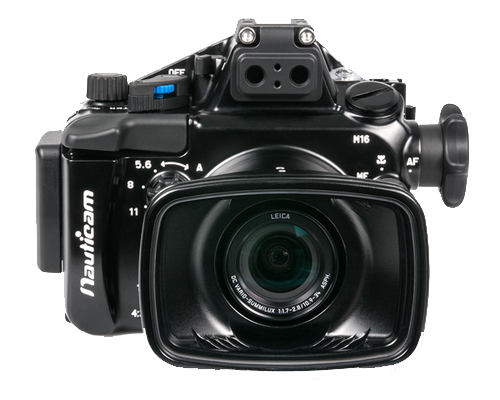Panasonic LX100 Review for Underwater
October 28th, 2015
Panasonic LX100 Review for Underwater Video & Photography
By Basil Kiwan

The Panasonic Lumix LX100 is a fantastic camera for underwater use, as well as being ideal for travel, or as a small walk-around camera to keep on-hand. It has a really nice lens and large sensor (micro 4/3) for a small camera. The lens, designed for Panasonic by Leica, is fast with a maximum aperture of F1.7 – 2.8 (depending on the focal length), which is handy in low-light, or when you want to isolate your subject with a shallow depth-of-field. The color and image quality are really pleasing, and there is a lot of detail, due to the larger sensor. The camera shoots 4K video, using the same software engine as the well-regarded Panasonic GH4, and the video quality is superb.
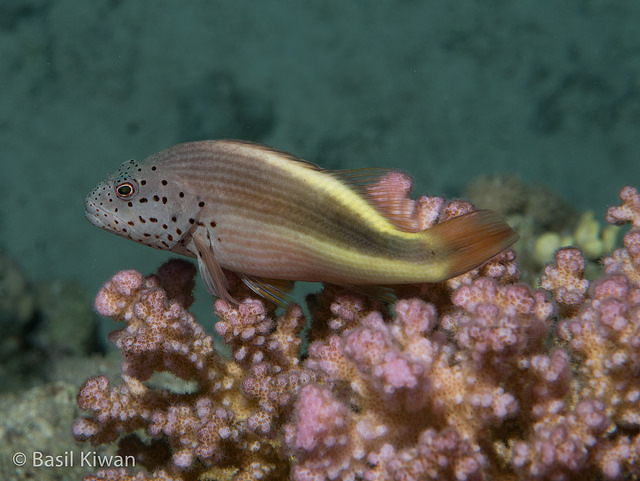
Pansonic LX100 Specifications:
- Effective pixels: 13mp
- Sensor Size: Micro 4/3rds
- ISO: 200-25600
- Custom White Balance: YES, 4 slots
- Optical Image Stabilization
- Shoots RAW images
- Shoots up to 4K high definition video at 30p or 24p
An Appealing Lens and Sensor Combination
The LX100’s lens is not an ordinary kit-zoom lens that you find on many compact or entry-level interchangeable lens cameras. The LX100 has a 10.9 - 34mm, with a bright maximum aperture of F1.7 - F2.8 (equal in full frame terms to a 24-75mm F3.4 – 5.6), and optical image stabilization. This lens is comparable to Panasonic’s pro-level 12-35mm F2.8 zoom, covering a similar zoom range on a similar-sized sensor, but with a faster aperture (F1.7 at the wide end) and providing those nice Leica colors. The focal length range may be a bit restrictive on land (sometimes it is nice to have a bit longer focal length), but underwater it is perfect. The lens is sharp across its zoom range, provides really pleasing colors, and nice detail. The bright/fast lens, on a relatively large sensor, is useful in low-light environments like diving, and also makes it easy to isolate your subject with a shallow depth of field surrounded by a pleasing background blur.
The LX100’s sensor does not have an especially high pixel count. It is the same sensor that the Panasonic GX7 has — which is a standard 16 MP micro 4/3’s sensor. The effective pixel count is between 11 and 13 MP, depending on which aspect ratio you chose, but this is more than adequate resolution unless you are doing a lot cropping of your images. I typically use a 4:3 ratio for still images, and 16:9 ratio for video – there is a physical switch on the camera body as well as a corresponding dial on the Nauticam housing.
Camera Controls and Settings
The camera has great ergonomics, although the style is very “old school” and tactile, and may not appeal to everyone. Despite being different from the digital menu based cameras common today, I found it still provides a very fluid and enjoyable shooting experience. The layout is intuitive, reminding me of my first camera, a Nikon (film) SLR. The aperture is controlled by a ring on the lens, there is a switch on the top of the lens for aspect ratio, and a switch on the side of the lens controlling manual/auto focus. There is a separate dial for the shutter speed and the exposure compensation, and Panasonic’s usual back dial buttons for white balance, ISO, and focus point selection.
What you may notice right away is that there is no mode dial on the Panasonic LX100. In order to “change modes” you simply select the appropriate combination of Aperture and Shutter speed. For example, “Auto Mode” would be done by putting both the aperture ring and shutter speed dial to the A. Set only aperture to A and choose a specific shutter speed for “Shutter Priority Mode”, etc. There are no extraneous “Scene” or “Art Filter” modes that you find on many compact cameras these days.
In addition, the camera has a “Q-menu” button for accessing a range of different function, and 3 individual function buttons on the back. The “Q-menu” and the function buttons can all be customized to your liking. These buttons and control dials are perfectly mapped to the control knobs and the buttons on the Nauticam housing.
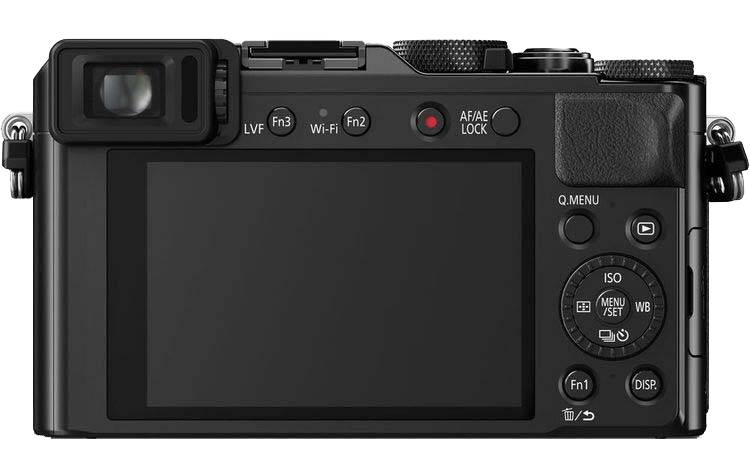
Custom Controls
One feature, useful to divers, is the ability to set up to 3 custom modes (C1, C2, and C3), in which you can store different feature set options. I mapped the custom modes to one of the function buttons on the back of the camera/housing. I set up C1 for shooting still photos, and C2, with some different selections geared towards shooting video. While diving, I would just hit the function button to change between custom modes for stills and video, and it very fast and easy to change my choices, depending upon the situation.
There are a range of picture profiles that Panasonic provides with the camera – I chose the “natural” profile for both video and stills, but mapped the choice of profiles to my Q-Menu, so that I could change it at will. For my C2 video setup, I turned my iDyanamic setting to “off”, as this is reported (in online reviews) to reduce noise in your video. I am not 100% certain that it made a noticeable difference, but the video quality is fantastic, and it is worth experimenting.
Like other mirrorless and compact cameras, the LX100 has an electronic viewfinder that provides both focus peaking (great for manual focus), histograms, and zebras to check exposure. The LX100 will toggle automatically between the viewfinder and the rear LCD screen, when you put your eye to the viewfinder, but you can set it manually to one or the other. I use the electronic viewfinder on land as it is more detailed and brighter than the LCD screen, which makes it nicer to compose your image. Underwater I rely on the LCD screen as I find my mask and the housing just make it awkward to use the viewfinder. The LCD screen image is good, but not great quality. I find that images that look mediocre on playback through the LCD screen, were often quite nice once I pulled them up on the computer for further editing.
Nauticam LX100 Underwater Housing Review
The Nauticam LX100 Housing is well-made, reassuringly solid, but still quite small. I carried my entire housing set-up, with a strobe and video light, in my Thinktank backpack, which is a relief given shrinking baggage allowances on airlines. Nauticam has accommodated a lot of dials and buttons on a very small housing, aligning to the camera’s myriad manual controls. This housing has an optional vacuum pump, which I strongly recommend as it provides real peace-of-mind/assurance that the housing will not leak.
There are three port options with the Nauticam LX100 housing:
- The standard rectangular flat port which accommodates an optional diopter/wet lens, and allows for usage of the full zoom range of the LX-100’s lens,
- Nauticam N50 Mini Dome which corrects the underwater field of view to be the same as on-land (about 85 degrees at the widest focal length of the lens),
- Nauticam N50 Short Port which locks down the lens at its widest focal length. This port is designed to be paired with an ultra-wide wet lens (like the Inon UWL-H100).

I did not try out the short port, but had good results with both the rectangular flat port and the mini-dome port. The housing handles well underwater, being small and maneuverable, and all of the controls were easily in reach. I found I could keep the housing neutrally buoyant with a few Stix floats on my strobe arms.
Mounting the camera into the Nauticam housing is a bit tricky. In order to fit it properly you must make sure that the camera and housing settings match. In addition whenever you insert or remove the camera from the housing, you have to set both the camera and housing to F16, both camera and housing to AF and both camera and housing to aspect ratio 4:3. Nauticam makes this easy to remember by Putting a white line on the inside of the housing. When you have the controls lined up properly the white lines also line up. Then just match those settings on the camera and it is simply drop in loading (no camera tray to worry about).
Nauticam LX100 Recommended Accessories
- Nauticam LCD magnifier, for people without perfect vision
- Nauticam handstrap, for single-hand holding
- Nauticam N50 Short Port, for wide-angle lenses
- Nauticam N50 Dome Port, restores in air Field of View underwater
- Dyron super-wide angle lens for awesome wide-angle
- Bluewater +7 macro lens, for great macro
- Nauticam Compact Macro Converter, highest quality macro diopter
LX100 Still Image Quality
The LX100’s micro 4/3rds sensor is significantly larger than other compact cameras, which helps low light performance, but at a high ISO there is more noise than a full frame or APS-C sensor camera. Shots of blue water will start to show grain at above ISO 800, while shots against a reef or similar backgrounds are pretty clean up ISO 1600. However, in real-world shooting situations, this is not a constraint, as the combination of a relatively large sensor combined with a bright lens makes it very easy to shoot both stills and video at a lower ISO, which minimizes noise/grain. The raw image files have a lot of latitude for adjusting exposure afterward, particularly in recovering detail in the shadows. Overall, the LX100’s micro 4/3rds sensor, paired with its phenomenal zoom lens, results in some really nice image quality. You won’t be disappointed with the results.
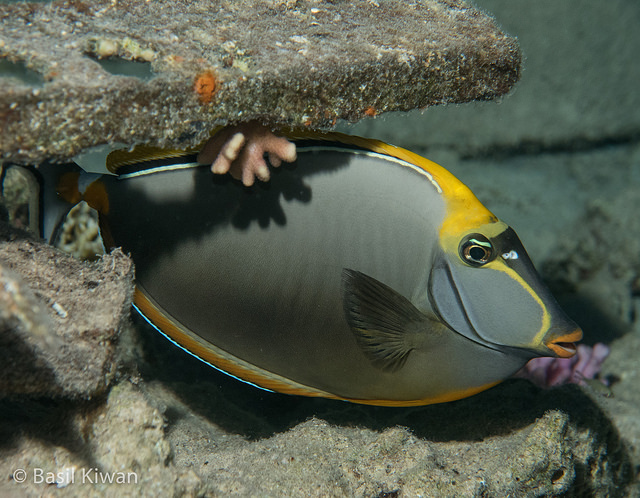
LX100 Underwater Video Quality
The big draw about the LX100 is its ability to shoot 4K video. The LX100 uses the same video software engine as Panasonic’s well-known GH4, but it does not have the same wide array of frame rates or video options of the more cinema oriented GH4. The 4K footage is just beautiful, with rich color and resolution, and is a delight to work with afterwards. Although you have several options for shooting HD footage, you should ALWAYS shoot your video in 4K, even if you only intend to view your final product in HD. If you downscale HD (1080p), either by editing the 4K footage on a 1080p timeline, or exporting your movie to a 1080p file, the results are very pleasing. The color and resolution really pop, compared to regular HD footage shot in HD, and the noise gets compressed resulting in cleaner footage
The LX100 offers the option of shooting 4K in either 24 frames per second (the cinema standard), or 30 frames per second (TV standard). There are even more options in HD (including 60 frames per second), which can useful for a slow motion effect. In general, to keep the motion blur natural looking in video, set your shutter speed at 2x the frame rate – 1/50th of a second for 24 fps, or 1/60th of a second for 30 fps. Keep in mind that those are relatively slow shutter speeds, so you will find that in many lighting situations (even underwater), that you need to close down your aperture and/or lower your ISO, in order to keep your shot from being overexposed. This is easy to do, as the LX100 allows full manual control when you are shooting in video.
The LX100 does not have the Cine-D, Cine-V or V-Log video profiles of the GH4, so if you are seeking to shoot and heavily color grade your footage in post, you may want to consider the GH4. That said, I shot with the “Natural” color profile, and the footage out-of-camera has nice color and contrast, without need of a lot of grading. I was able to do some adjustment on some of the clips in post, recovering overblown highlights and boosting saturation.
Underwater Video shot on the LX100 by Basil Kiwan in the Red Sea
Custom White Balance
The LX100 has a reliable custom white balance. On my previous camera, I used a magic filter (a gel on the back of the lens) in order to get my colors correct underwater. I brought the magic filters with me on this dive trip with my LX100, but never used them. I was able to get a good white balance pretty much at any depth, and the camera can bank up to 4 custom white balance settings, which speeds up changing your white balance. The ease with which you can change and adjust white balance is particularly helpful when shooting video. For stills, the custom white balance is helpful, but less critical when shooting with strobes. In those instances, I set the white balance to auto, and set the strobe (Sea & Sea YS-D1) to TTL, and had well exposed images.
Autofocus
Like many compact and mirrorless cameras the LX100 uses a contrast detection based autofocus, but the LX100 has Panasonic’s proprietary depth-from-defocus (DFD) technology. There is not much to say about the autofocus, other than it is extremely fast and very reliable, even in low light.
I set my AE/AF Lock button on the back of the camera to AF Lock (it is in the custom menu), and then used it as a back button autofocus, which was really very nice. In addition, there is a switch on the side of the lens (also mapped to the Nauticam housing), toggling between autofocus (AF), macro autofocus (AF with a little flower symbol), and manual focus.
There are a variety of focus modes and it really merits some time playing with all of them. The LX100 has a 49 point general autofocus in a grid across the image area, a center area focus (you will two brackets in the middle of the screen), a “custom multi” mode – which allows any combination of the 49 focus points, a face/eye recognition mode (not particularly relevant underwater), a tracking mode – which can possibly handle large slow moving objects (I did not test it out), and a pinpoint mode that places crosshairs in the center of the LCD screen (its position is adjustable) and then opens a pop-up magnification window, and allows you to fine tune the focus manually (with focus peaking). I generally used the custom multi-mode, but the pinpoint focus mode is particularly useful for macro shots.
The LX100 really shines in close-focus wide-angle situations — at the wide end of the focal range it can close-focus to within 1.5 inches of the front of the lens. It is not a true macro lens, but the images are crisp, the in-focus details are clear, and the out-of-focus background blur is very attractive. There is the option of using the Nauticam CMC wet lens, which pairs with the standard rectangular flat port, for true macro work, which provides very nice macro magnification, though very shallow depth of field.
Conclusion
The LX100 is a small, but very capable compact camera, pairing a decent sensor with a really nice Panasonic-Leica lens. The 4K video quality is excellent, with great color and resolution, and is a lot of fun to work with. The still image quality gets overshadowed by the video features, but you can shoot some really nice pictures with this camera – particularly for macro or close-focus wide angle shots. The camera’s interface is intuitive, and customizable, and mates perfectly to the Nauticam LX100 housing.
Underwater Video on the LX100 shot by Kelli Dickinson in Catalina, CA

